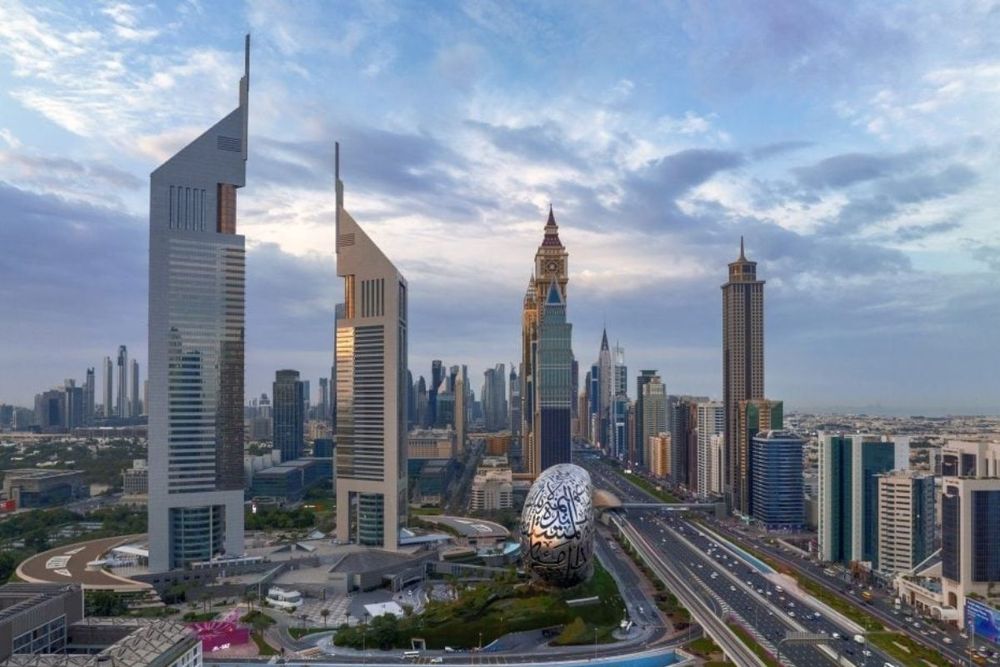The pace of decline in the government's debt stock could accelerate further if the downward trend in nominal debt persists in the years ahead.
Dubai’s government debt load will decline as a share of GDP in 2023, S&P Global said in a report, citing the robust economic growth that is set to benefit from the UAE’s wide-ranging social and economic reforms and support the city’s medium- and long-term economic growth prospects.
“We forecast a reduction in government debt to about 51 percent ($66bn)of GDP in 2023 from a cyclical high of 78% in 2020,”
said S&P Global.
Dubai has been repaying its debt, including $2.9bn in bonds from 2020 to first-quarter 2023, and reduced its loans from Emirates NBD by 30 percent over the same period.
Should the government continue to reduce nominal debt, S&P Global said the debt stock could fall even quicker. The rating agency placed broader public sector debt, which counts liabilities from non-financial government-related entities (GREs) – around 100 percent of GDP.
The robust recovery of the real estate and tourism sectors should help some GREs to deleverage and reduce rollover risks amid current favorable operating conditions.
The components of S&P Global’s gross general government debt estimate for 2023 include 44 percent in loans from Emirates NBD and 26 percent in outstanding securities issued by the government, and other bilateral and syndicated facilities.
Dubai’s economic prowess
Meanwhile, Dubai emerged from the COVID-19 pandemic as an investment hub and a magnet for tourists and the wealthy.
S&P Global projected that Dubai’s real gross domestic product (GDP) will expand by about 3 percent in 2023, driven by the city’s relatively well-diversified and service-oriented economy.
The Middle East’s business and tourist hub received 14.4 million international overnight visitors in 2022 and the robust performance continued in 2023, with 4.7 million tourists recorded in Q1 2022 close to the 2019 pre-pandemic record of 4.8 million visitors, according to the Dubai Department of Economy and Tourism.
Dubai unveiled a new economic plan for the next decade, which envisages increasing foreign direct investment to Dhs650bn by 2033 from Dhs32bn currently. The growth strategy is expected to increase private sector investments in the city to Dhs1tn in the next decade.
S&P Global said the launch of the Dubai Economic Agenda D33 (D33) by the government is an important step toward achieving sustainable and diversified economic growth in the long term.
The authorities aim to achieve the objectives of D33 by, among other things, increasing trade with nontraditional markets, attracting the world’s best universities, supporting small and midsize enterprises, and launching a plan for green and sustainable manufacturing.
The D33 plan will run alongside the federal government’s “We The UAE 2031” plan and the “Dubai 2040 Urban Master Plan”.
Dubai will record modest fiscal surpluses averaging about 0.3 percent of its GDP in 2023/2024, following an estimated surplus of 0.7 percent of GDP in 2022 in line with the government’s 2023 budget.
The city’s revenue and expenditure are expected to stabilize at about 16 percent of GDP each in the next two to three years. S&P Global said taxes – customs, value-added, corporate tax on profits earned by foreign banks operating in Dubai, and excise – to make up as much as 40 percent of government revenue, with around 60 percent originating from nontax sources such as fees, fines, and grants.
News Source: Gulf Business









